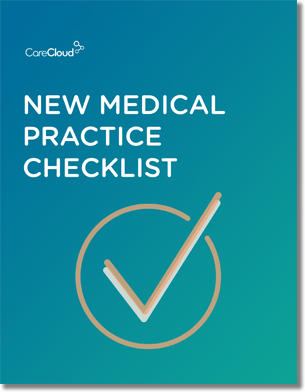As the Stage 1 Meaningful Use deadlines approach, providers are recognizing that it’s time to make the switch to digital records at their practices. Subject to a time crunch, many are scrambling to deploy an electronic records system right away.
But if physicians and practice managers aren’t careful in their selection processes, they may purchase equipment only to see it quickly become outdated. Systems that are not able to change with the times will become tools of a bygone era.
Many doctors looking to purchase a records system are unaware of the significant differences between electronic medical records (EMRs) and electronic health records (EHRs). An EMR will make it extremely difficult to not only attest for Meaningful Use and EHR incentives but to improve the quality of care as well.
Before you go digital at your practice, it’s important that you understand the differences between EMRs and EHRs, why EHRs make it easier to attest for Meaningful Use, and how they can improve patient management and outcomes.
Over the next few weeks, Power Your Practice will be parsing out the particulars between EMRs and EHRs in the new “End of EMR” series.
Today, PYP is taking readers through the evolution of medical records – piece by piece, system by the system – to elucidate how the EHR has become the optimal digital records model of the present and future.
Breaking Records
It all began with paper records, which can work for a single physician providing care, but make sharing health care information across providers more difficult. Notes scribbled in the margin, blurry faxes, and inconsistent shorthand can lead to errors, delays, and a degraded level of care.
EMRs were the next step, giving healthcare providers the ability to create a record that allowed for a third party to independently verify diagnoses and treatments.
First introduced by Lawrence Weed, MD, in the 1960s, EMRs were a major step forward in medicine; however, any system developed over 50 years ago could not be prepared for the technology requirements of today.
EHRs take the progress made over decades of EMR use and incorporate it into a system that gives providers greater accessibility, flexibility, and functionality. EHRs enable information exchange, powering seamless data sharing that can reduce redundant care, improve patient outcomes, and lower healthcare costs.
So if EHRs offer such enhanced services to customers, why are so many providers still purchasing and deploying outdated EMR systems in their practices?
The difference between EMRs and EHRs can be difficult to delineate because physicians fail to see a major parallel regarding changing technology systems: Unlikely as it may sound, the evolution of how music is shared and enjoyed is very similar to the evolution of electronic record technology.
Come back next week to learn how the changes in the commercial delivery of music reflect the changes in the healthcare information technology industry.

Do you know what you need when setting up a new medical practice?



